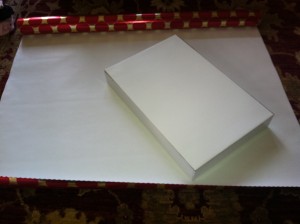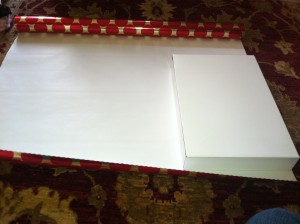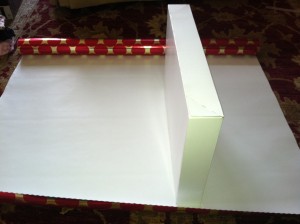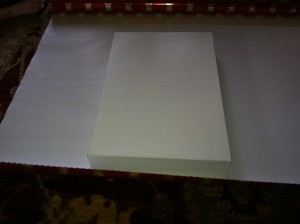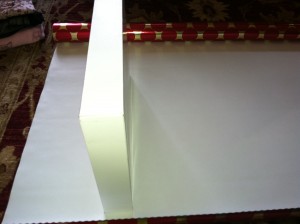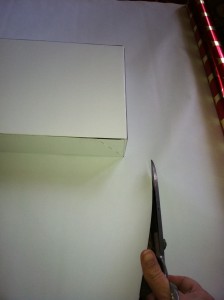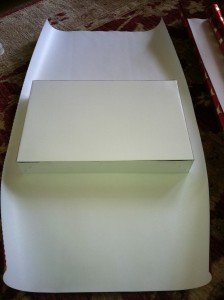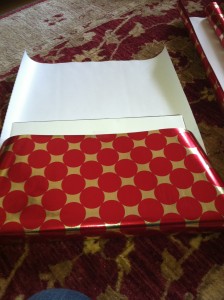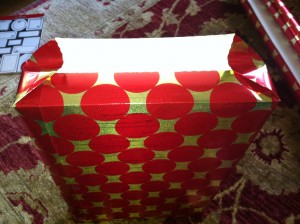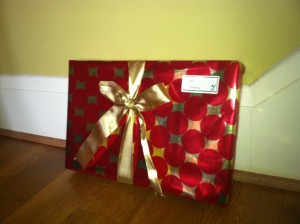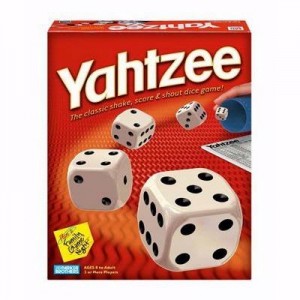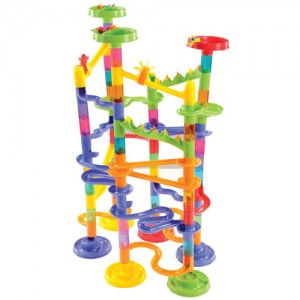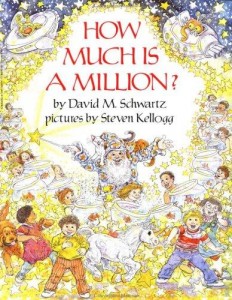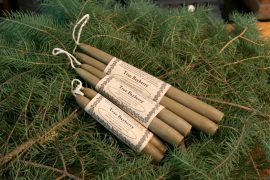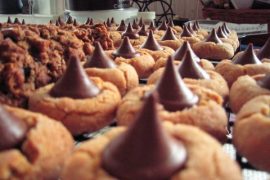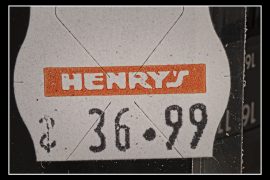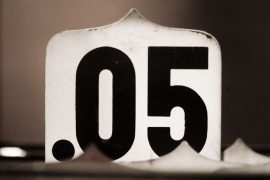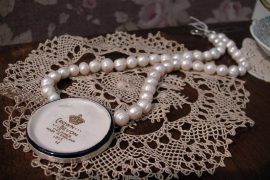Good grief the winter holidays include a lot of candles! Earlier this month, Christians began lightingAdvent candles; Hanukkah begins tomorrow night at sunset; Thursday is the Winter Solstice; andKwanzaa starts on December 26.
That’s a lot of wax!
Lately, I’ve been fascinated by how candles are made, and so I reached out to Kim Meade, owner ofAdirondack Chandler Candles. In the interview below, she explains how math plays a role in candle making. It’s a longer interview than usual, but Kim provided such great details, and I didn’t want to leave anything out!
Can you explain what you do for a living?
I make candles the same way they have been done for centuries, dipping candles in a variety of waxes, including paraffin, True Bayberry, and beeswax. I have a hand made carrousel that allows me to dip 120 pairs of taper candles per dip. I also make votives, tea lights, potpourri tarts and other items with wax in them. This is a full time job for me. I sell my candles to more than 100 retail shops, as well as several consignment shops and on Etsy. I also have a retail website as well as a very small retail shop in my studio.
When do you use basic math in your job?
I use math every day. I have recipes that I use to make my candles in a variety of scents and colors. I have to weigh the wax and adjust dyes and formulas depending on how much new wax I add to my batch. For example, a fresh, new batch of wax requires 75 lbs of wax. When I finish each dip, I always have a minimum of 30 lbs left over since the dippng vat has to remain full. At the end of the day, I save the leftover for the base for the next dip of this particular scent or color. The next time I am going to do this particular scent or color, I have to determine how much more wax I have to add to the melter. This is basic addition and subtraction.
Then I have to calculate the percentage of dye and fragrance that I have to add. For example, if I have added 45 new pounds of wax, I have to calculate the proportions — 45 lbs vs. 75 lbs. If I add 24 ounces of fragrance for a 75 lb batch of a particular scent and 5 Tbs of dye, how much would I add for a batch with only 30 lbs of new wax? (I always use a calculator for these calculations!)
I also have to consider the strength of the dye. Green dye is much more “potent” than, for example, yellow dye. I have color ratios that I use. If combining dyes for custom colors, I have to look at these ratios to determine how they will affect the end result For example, I may use only 1/2 the green dye vs. a red dye for a particular result.
With each dip, I determine how many of each size candle I have to make. I routinely make 6″, 9″ and 12″ candles. I have to look at my sales projections and determine how many of each candle size I have to make. I then measure the amount of wicking that I have to cut. As an example, for a 6″ candle, I need to cut a piece of wick that is 12″ long, since the wicking will hang over the holder to allow me to dip a pair of candles. I also have to add 5″ extra to give room for the wick to hang over the holder.
I have to ensure that the candles are at larger than the 7/8″ standard taper base, but not so large they look malformed. Wax will shrink when it cools, and temperature and humidity can affect it, so I have to be aware of each of these factors. Temperature plays an important role, specifically if it is warmer than 76 degrees. Over 80 degrees in studio temperature will negatively affect candle integrity. Although my candles will be fine above 80 degrees, they will not cool correctly and will have imperfections in them as they cool. Candles cannot be in a draft, as it will cause them to curve, so I have to consider weather (specifically in the summer). I cannot run an air conditioner during production.
I have a melter that I use to melt the 75 lbs of wax required for each batch. Each wax has a different melt point optimum pouring temperature, and flash point (point at which the wax will ignite). If combining waxes, calculations are made to determine correct melt point and pouring temperature. Fragrance also has a flash point. Wicks have different coatings on them (i.e., standard melt point, high melt point, super high melt point). I load this melter the night before, and have a timer that I use to start the wax melting at the appropriate time. It takes approximately 5 hours for the wax to melt to the correct temperature. so my first math calculation is to determine when to have the timer set to come on, depending on when I plan to start the day. Some days I try to get two dips done in one day (so I have to start very early). The second melt takes less time since the melter is already hot, so I have to make an educated “guess” on how long it will take based on temperature and size of the batch.
When making votives or tealights, I have to add other additives to the wax, such as stearic acid, vybar and other additivies depending on what is being made. These are based on proportions compared to the weight of the wax. I usually melt less wax, using a melting pot and a hot plate to melt this wax. Usually I will melt 5- 10 lbs, so I have to calculate how long it will take to melt, and how much dye,fragrance, etc to add along with the additivies . I base the dye on the original 75 lb recipe.
Finally, I use math during the packaging and shipping. I have to determine correct box size, weigh the candles and gather measurements from shipping boxes.
Do you use any technology to help with this math?
I always use a calculator or computer to do my math calculations. Just a few percentage points off in the production of my candles can ruin an entire batch. I made an entire batch one time with just 1/2 a teaspoon too much green dye and had to redo the dip and the candles I made, although beautiful, were the wrong color for the scent.
How do you think math helps you do your job better?
Just about everything I do requires math. I have several sizes of wicking that I use depending on the size and type of wax I am using. Large pillar candles require a larger wicking than, for example a 4″ petite, 1/2″ bas candle. Votive candles require larger wicks than tea lights. I also have all the proportions and ratios to consider. Without math, my candles would not have the correct proportions and most likely would not be successful.
How comfortable with math do you feel?
I actually do not like doing math at all. But, at my job it is second nature to me now. Without it, my products would not be successful. For example, I order 500 lbs of wax at a time, but each candle is only ounces in weight. I add ounces of fragrance to the entire batch, but how much of that cost is in each single candle? I purchase wicking by the yard, but the candle is measured in inches. Dye are purchased by the pound, but measured into the recipe by teaspoon or tablespoon. I have some complex spreadsheets that I have created in Excel that allow me to plug in the cost of my raw materials and it calculates the cost of my individual batch and candles. But, even with this, the cost of my raw materials changes at different times, and some of the materials I use, such as dyes, will last for several years.
What kind of math did you take in high school?
In high school I took algebra, geometry, trigonometry and calculus. I was very good at algebra, found geometry to be difficult, was pretty good at Trigonometry and found that I really enjoyed Calculus.
I have actually continued to learn ways to do math throughout my varied careers. There are always things to learn to help you do your job better. Learning to use Excel was a big boost for my business. It helps me to compare prices, past years sales, calculate my formulas, project raw material requirements, etc. It is amazing, when I think about it, how much math I use daily. I am used to doing it, but considering it for this interview, I realized that I use math in almost every aspect of my candlemaking, from ordering raw materials through to the finished product and sales.
Do you have questions for Kim? Ask them in the comments section!


